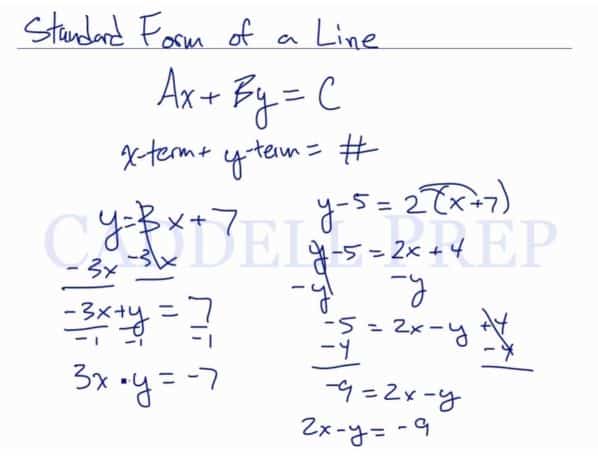This video explains how to convert linear functions from slope-intercept form and point-slope form, to the standard form of the equation of a line. After you finish this lesson, view all of our Algebra 1 lessons and practice problems.
The standard form of a line is written as:
where A, B, and C, are constants.
An example would be:
Would be written as:
Examples of Standard Form Of The Equation Of A Line
Example 1
The standard form of a line is written as:
Let’s bring all the variables to one side by adding on both sides
Therefore, we have:
Example 2
The standard form of a line is written as:
First, distribute in each of the terms inside the parenthesis.
Let’s bring all the variables to one side by adding on both sides
Then bring all the constant on one side by subtracting 13 on both sides
Therefore, we have:
Video-Lesson Transcript
The standard form of a line is
Where .
For example:
Let’s solve to make this look like this
Let’s get all the terms on one side first by subtracting on both sides
It looks like it but we want the term to be positive. So we divide both sides by
Let’s solve another one
Let’s bring all the variables to one side by subtracting on both sides.
Then bring all the constant on one side by subtracting
Let’s just rewrite it
Just to recap it’s just .



